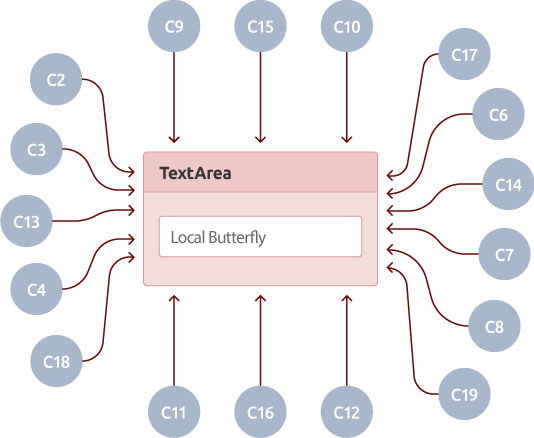This anti-pattern is on the lines of Global Butterfly but differs in its scope of dependents. As per
Impact
- The impact is similar to that of Global Butterfly but limited in scope.
- A small change in the Local Butterfly impacts all immediate dependent objects.
- Testability and maintainability are affected.
Characteristics
- Too many objects directly depend on a Local Butterfly. Similar to a Global Butterfly, its dependence can be in form of access, reference, call, contained, instantiation, implements, extends, objects thrown (exceptions). Only direct/immediate dependents are considered.
Example(s)

- Using the tool Structural Analysis for Java to analyze TextArea application revealed that about 18 percent of objects in TextArea application are Local Butterflies.
- TextArea is represented as a Pink block at the center.
- TextArea has 19 immediate dependents.
- The rectangle represents objects that are immediate dependents of TextArea.
- Continuous arrows emerging from TextArea indicate that objects at the other end either contain, references, calls, or extends SimpleNode object.
- Dashed arrows emerging from TextArea indicate that object at the other end use TextArea object.
- Any changes in the TextArea can break these classes.
Guidelines
- Only basic Interfaces or utility classes should be allowed to become Local Butterflies.
- Avoid a design that deploys a low degree of Coupling (low value for the KPI – Coupling Between Objects) for each class.
- Group classes with
related / similar functionality intocommon hierarchy (change Has-A relationship to Is-A relationship).
